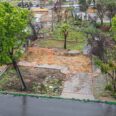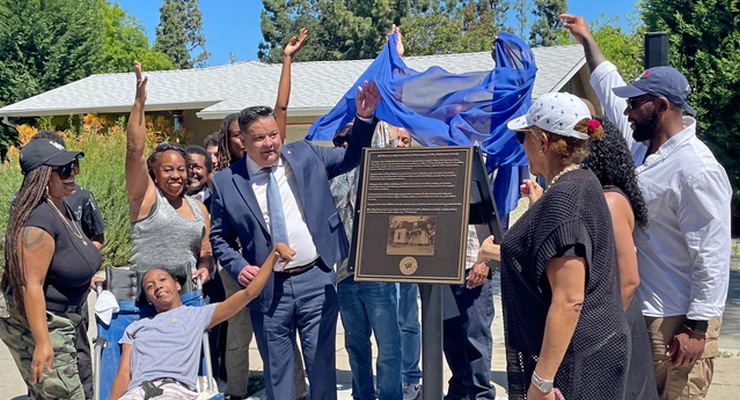
In a wide-ranging examination of the evolving role of the national parks in American life, The Huntington Library, Art Collections, and Botanical Gardens will commemorate the centennial of the U.S. National Parks Service in exhibitions that run consecutively from May 2016 through February 2017 in the West Hall of the Library building. The exhibitions will touch on a variety of roles the National Parks have played over time—as scenic wonderlands that have become iconic markers and essential destination points for tourists, adventure-seekers, scientists, government surveyors, businessmen, and explorers of all stripes. The exhibitions also will examine the tensions that emerged as a result of diverging priorities and competing agendas.
“The national parks are our nation’s crown jewels,” said Peter Blodgett, H. Russell Smith Foundation Curator of Western Historical Manuscripts at The Huntington, and exhibition curator. “The centennial of this remarkable system of public lands gives us a perfect opportunity to reflect a little more deeply, explore the dynamic interplay between these great American landscapes and the people who seek to define them.”
The first exhibition, Geographies of Wonder: Origin Stories of America’s National Parks 1872?1933, is on view May 14 through Sept. 3, 2016 and features some 100 items—all drawn from The Huntington’s collection of rare books, manuscripts, photographs, prints, and related materials. Among the treasures on display will be a mammoth 1873 photo album by one of the premier photographers of the day, William Henry Jackson. The book will be opened to a photo of Yellowstone’s Grand Canyon. Jackson’s photographs, according to historians, played an important role in convincing Congress in 1872 to establish Yellowstone National Park, the first landscape to be so designated by the federal government.
Origin Stories highlights early Euro-American encounters with scenic landscapes that eventually would acquire international renown. Initially, these were eastern settings—the White Mountains in New Hampshire, Natural Bridge in Virginia, and Niagara Falls, N.Y. But as settlers moved west, great scenic discoveries included Yellowstone, the Grand Canyon, and Yosemite Valley. “In those early years of Euro-American settlement, we could claim no great cultural assets like the Louvre or the castles on the Rhine,” said Blodgett. “So these places quickly became our icons. They were essential to our cultural identity and began to draw people from all over the world.”
Before there was Yellowstone, President Lincoln signed legislation in 1864 protecting Yosemite Valley, effectively turning it over to the state of California, to keep it out of the hands of developers and private ownership. While this was not the first national park, per se, it was the first scenic area placed under such protection through the actions of the U.S. government. It was, much as it is today, a spectacular, rugged, and physically demanding landscape. An 1861 letter, featured in the exhibition, by a traveler named William Boardman describes the brutally difficult trip through Yosemite he and his traveling party made by wagon and horse, and how the jarring terrain left the women, wearing unforgivingly rigid hoopskirts, bruised and battered. Even so, travelers were eager to make their way there, to see, as Boardman described it, this “wonder of wonders.” By the 1880s, scenic marvels such as Yosemite and Yellowstone had become both cultural and economic drivers, and firms like Boston’s Raymond-Whitcomb Co. were leading the way, creating all-expenses-paid tours and publishing special guidebooks to lure middle-class travelers from east to west via train. Origin Stories features an assortment of these guidebooks and an excerpt from a diary by a young excursionist named Amy Bridges, who describes her impressions of Yosemite just 30 years after the first Euro-American tourist expeditions had reached it.
The exhibition also examines the treatment of Native Americans in the parks during this period. Lafayette Bunnell’s book-length account of the first Euro-American incursion into Yosemite Valley in 1851 describes rounding up “Indians” who inhabited the region and removing them from it, including Chief Tenaya, for whom Yosemite’s famed Tenaya Lake is named. Only a few short decades later, the government, as well as private promoters, would begin using images of Native Americans to “sell” tourism. The Great Northern Railway in particular adopted the image of the Blackfoot Indian as a prominent part of its marketing campaign on behalf of Glacier National Park. On display will be several examples of these types of brochures, postcards, and promotional items, including a 1904 cover of Sunset magazine featuring a painting by Chris Jorgensen showing a native hut and a native woman working in the foreground, with Half Dome in the background. “Indigenous people were ousted and resettled outside of park boundaries, and yet their historical presence was used as a prominent advertisement to entice people to visit,” said Blodgett.
As interest in visiting the parks grew, so did interest in exploiting their rich resources: mineral deposits, timber, and water chief among them. To counter those activities, a call for conservation emerged, led vociferously by the renowned naturalist John Muir. Featured in Origin Stories is Muir’s 1901 volume, Our National Parks, a compendium of articles he published in Atlantic Monthly that establishes a conservation agenda and the need for active stewardship of these sites. And with such activism on behalf of conservation came Stephen Mather, assistant to the Secretary of the Interior, calling for a centralized management plan. Under Secretary of the Interior Franklin Lane, Mather created the National Park Portfolio, on display in the exhibition, a publication produced to convince Congress to create the National Park Service. Congress passed the legislation and President Woodrow Wilson signed it in August 1916. “The portfolio was strategically placed on every desk of every member of Congress at the time,” said Blodgett. After the vote, Mather was appointed the Park Service’s first director.
Even with centralized management and an activist director, exploitation and encroachment into the parks remained a concern. The battle over Yosemite’s Hetch Hetchy Valley, which was flooded and dammed in the late 1910s and early 1920s to provide water to San Francisco, became a linchpin for conservation activists. The National Parks Association, a private organization established to lobby for protection, was launched in 1919. The exhibition will include copies of the NPA newsletter and a 1922 letter by the association’s then director, Robert Sterling Yard, calling for the protection of the parks from excessive development.
As much as the parks were seen as wondrous places for both recreation and conservation, they were also understood as an important locus for serious scientific work. Both government and private entities launched coordinated efforts to study the biology, topography, hydrology, and geography of the parks. Origin Stories will feature letters and related documentation of early scientific study conducted in the parks, including a 1925 copy of Yosemite Nature Notes, produced by the park’s naturalist, C.P. Russell, and a 1911 report written by ethnologist Jesse Walker Fewkes, summarizing the antiquities of the cliff-dwelling Anasazi, preserved within Mesa Verde National Park.
The 1920s were a “boom period” for visitors, said Blodgett, fueled by rail and automobile transportation, a roaring economy, and active marketing and advertising. But by the late 1920s and early 1930s, with the Great Depression, the numbers of visitors began to wane and the Park Service’s budget had shrunk. These were much quieter and leaner years for the parks until President Franklin D. Roosevelt launched his New Deal program, which included an ambitious plan to expand the parks. That growth period, through the present, will be examined in the second exhibition, Geographies of Wonder: Evolution of the National Park Idea 1933–2016, which will be on view Oct. 22, 2016–Feb. 13, 2017.
About The Huntington
The Huntington Library, Art Collections, and Botanical Gardens is a collections-based research and educational institution serving scholars and the general public. More information about The Huntington can be found at huntington.org
Visitor Information
The Huntington is located at 1151 Oxford Rd., San Marino, 12 miles from downtown Los Angeles. It is open to the public Monday, Wednesday, Thursday, and Friday from noon to 4:30 p.m.; and Saturday, Sunday, and Monday holidays from 10:30 a.m. to 4:30 p.m. Summer hours (Memorial Day through Labor Day) are 10:30 a.m. to 4:30 p.m. Closed Tuesdays and major holidays. Information: (626) 405-2100 or huntington.org.














 0 comments
0 comments



